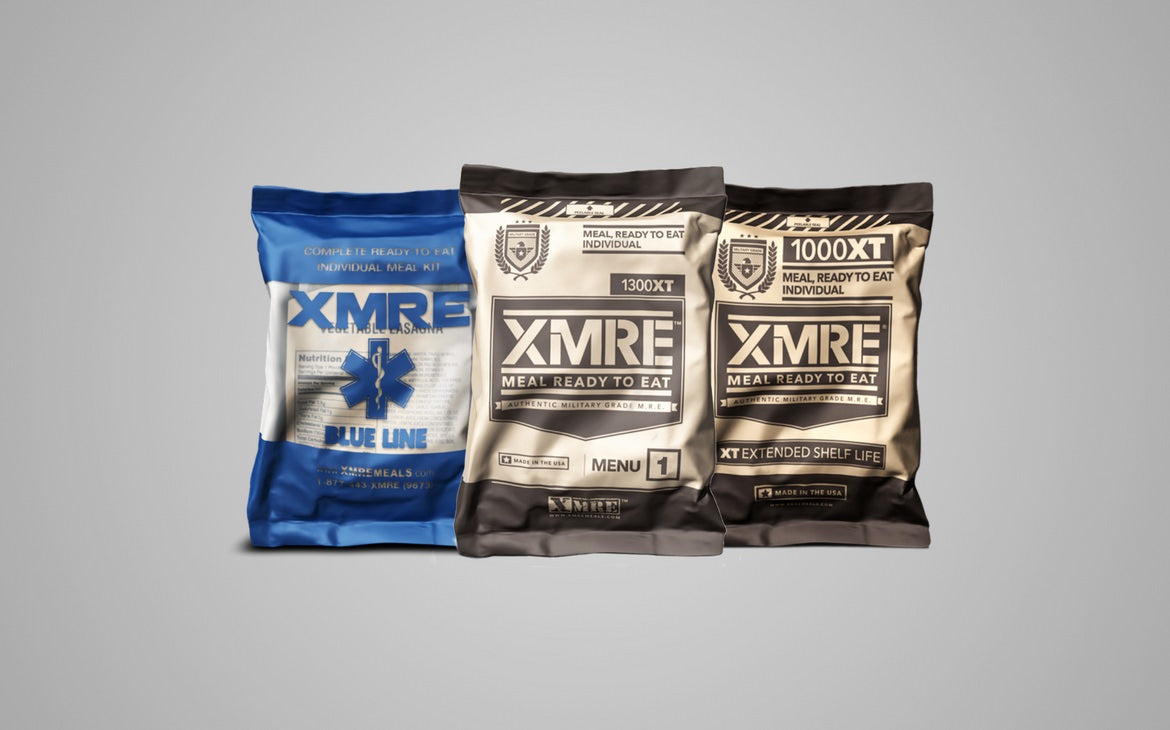MREs, or ‘meals ready to eat’ were originally the preserve of the military, but in recent years they have become something that more civilians use either for camping and outdoor pursuits, or for disaster planning and “doomsday prepping”.
MREs are designed to be highly shelf-stable and to provide a large number of calories in a small package, with some nutritional balance. They are designed as a form of emergency ration, rather than for long-term survival. The military would typically provide their forces with access to high quality, moderately fresh nutrition during deployments, with fresh supplies and a regular cook. If the supply chain is interrupted or a serviceman is cut off from supplies for a brief period then they would turn to the MREs that they are carrying so that they can still have the energy to do their job. MREs are not designed to be a long-term source of nutrition, and they would likely cause digestive issues or constipation if they were used for more than a year.
MREs are a good idea for civilians who live in earthquake or hurricane zones, or for those who live in areas where there are frequent rolling blackouts. They are also used by people who drive a lot in extreme conditions – an MRE could be a good option for someone who gets stranded in the snow and wants to eat something calorie dense and arm to keep them going until help arrives.
The official shelf life of an MRE can vary. On average, they will stay fresh for three years at what would be called “normal” temperatures (meaning 80 degrees F), but they can last a lot longer if kept cold, and will perish quickly at warmer temperatures. An MRE kept in a warm environment may start to go off after 55 months. Kept at 60 degrees F they may last for 130 months, which is more than ten years. Note that the time and temperature effect is cumulative – so if an MRE is stored at 110F for ten weeks, then it would be considered to have lost 50% of its shelf life (the shelf life of an MRE at that temperature is 5 months, or 20 weeks). This means that if it was moved to 70 degrees F, then the shelf life remaining would be 50 months – one half of the 100 months that someone could normally expect.
Most MREs have a disc on them which shows how fresh the product is. The disc has two circles. If the inner circle is lighter than the outer circle then this means that the meal is safe to eat. If it is darker, then you should discard the meal immediately. If the pouch is swollen or damaged, then you should discard the meal.
An unopened, undamaged MRE that has been kept in a cool place will stay good for a very long time, but it may not taste good. There are videos of people eating MREs that are decades old – and that is probably perfectly safe with the MREs that were made for the military decades ago. However, more modern consumer-grade MREs are not designed with the same post-apocalyptic strength in mind.
Even so, you can expect that the dry parts of an MRE – the crackers, cookies, etc, will last for a very long time and will still be good even after many years. The wet parts may start to taste stale after a while, but if you are opening an ancient MRE then you are probably more concerned with taking in calories than with getting something that tastes good.
If you are prepping for fun rather than for anything serious, then consider rotating your MRE stash periodically – eat the old MREs before they are “going off” or pass them on to a friend that likes to go camping or hiking. This will help to ensure that you don’t waste a huge number of meals, and that you don’t run out of space to store the old ones.
Remember that the date on an MRE is the “inspection date” rather than a hard expiry date. This date is usually three or five years after the meal was packed, and is intended as a guideline to remind you to check the meal to ensure that the packaging is sound, that there are no signs that the meal is going off, and that the disc has not changed color. A recreational buyer of MREs would do well to replace them around this time – since that three year mark is the lifespan of a meal at normal temperatures. If you cannot, however, or if you are caught in a pinch and all you have to eat is a four year old MRE, then use your sight and sense of smell to make a judgement call about whether it is safe to eat.

Leave a comment
This site is protected by hCaptcha and the hCaptcha Privacy Policy and Terms of Service apply.